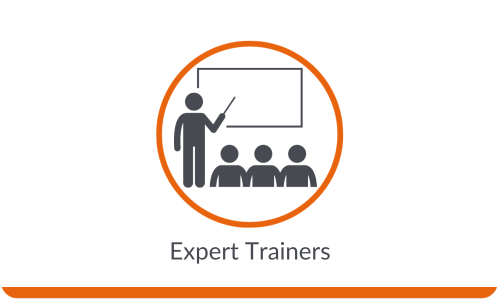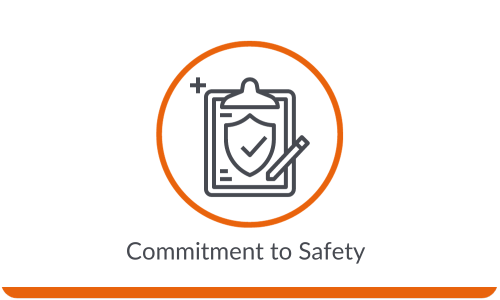Fire Safety Advisor Training
REQUEST A GROUP TRAINING QUOTE NOW!
What people are saying
Overview | Fire Safety Advisor Training
Fire Safety Advisor Training is a pivotal programme designed to equip individuals with the expertise and knowledge required to ensure safety and compliance within various environments. This training is essential for those seeking to fulfil the role of a Fire Safety Advisor, a position mandated by law in many workplaces across Australia. The curriculum focuses on a comprehensive range of topics, including understanding fire safety regulations, emergency planning, and the implementation of effective fire prevention strategies. By undergoing this training, participants will gain the confidence and skills necessary to develop and oversee fire safety measures, conduct risk assessments, and respond effectively in the event of an emergency.
Our Fire Safety Advisor Training is tailored to meet the needs of a diverse audience, from professionals in the workplace to individuals responsible for public safety. The course content is constantly updated to reflect the latest in fire safety legislation and best practice guidelines, ensuring that our trainees are well-prepared to tackle real-world challenges. Through a blend of theoretical knowledge and practical application, participants will learn how to create a safe environment, effectively manage fire safety equipment, and conduct emergency evacuations. Our expert instructors, with extensive experience in fire safety, provide invaluable insights and support throughout the training process.
In addition to the core curriculum, our training programme places a strong emphasis on the development of leadership and communication skills. This is crucial for Fire Safety Advisors, who must be able to not only devise and implement fire safety plans but also to effectively communicate these strategies to individuals at all levels within an organisation. The training also includes case studies and scenario-based exercises, allowing participants to apply their knowledge in simulated situations. This hands-on approach ensures that trainees are not only knowledgeable about fire safety regulations but are also capable of applying this knowledge in practical, real-life situations.
FIRE SAFETY ADVISOR TRAINING TAILORED FOR DIVERSE INDUSTRIES
Our Fire Safety Advisor Training is uniquely tailored to cater to the diverse needs of various industry sectors, ensuring relevance and effectiveness across the board. Recognising the distinct challenges and risks each sector faces, our course offers specialised modules designed to address the specific requirements of different work environments. Here’s how our training is customised for key industries:
Healthcare: We focus on creating evacuation plans that consider the needs of patients and residents with limited mobility, alongside managing the risks associated with medical equipment and oxygen supplies.
Education: Our training emphasises the development of emergency response strategies suitable for schools and universities, ensuring the safety of students and staff with regular drills and safety education.
Hospitality and Accommodation: For the hospitality sector, we offer guidance on crowd management, fire hazard identification, and comprehensive evacuation procedures to protect guests in hotels and resorts.
Manufacturing and Industrial: We address the unique fire risks present in factories and industrial settings, including the handling of flammable materials and machinery, through specialised safety protocols and employee training.
Construction: Our course covers fire prevention measures during construction activities, focusing on risk assessments and the safe use of temporary electrical systems and welding equipment.
Government and Public Sector: Training for government buildings and public institutions ensures compliance with fire safety legislation and prepares staff for emergency situations.
Transport and Logistics: We tailor our training to the transport sector, highlighting hazard identification, emergency response, and the safe storage of hazardous materials in airports, seaports, and logistics centres.
This customised approach ensures that participants from all sectors receive the most relevant and practical fire safety training, empowering them to effectively manage and mitigate fire risks in their specific work environments. Join our Fire Safety Advisor Training to benefit from industry-specific knowledge and skills, enhancing your ability to protect lives and property in your sector.
PROGRAM DETAILS
Students who are deemed competent will receive a Statement of Attainment, which is recognised under the Australian Qualifications Framework. This training is nationally recognised:
- PUAFER001 Identify, prevent and report potential facility emergency situations
- PUAFER002 Ensure facility emergency prevention procedures, systems and processes are implemented
- PUAFER003 Manage and monitor facility emergency procedures, equipment and other resources
- PUAFER004 Respond to facility emergencies
- PUAFER005 Operate as part of an emergency control organisation
- PUAFER006 Lead an emergency control organisation
- PUAFER007 Manage an emergency control organisation
- PUAFER008 Confine small emergencies in a facility
Intrinsic Safety Pty Ltd (RTO45803) is responsible under the National Vocational Education and Training Regulator Act 2011 for the quality of the training and assessment being delivered in this course and for the issuance of all AQF certificates.

Course Fees
- Group Bookings: Contact us to discuss a customised quote.
Refunds & Fee Protection
- Your Guide to Policies: For detailed information on refunds and fee protection, please consult our Pre-Enrolment Participant Handbook.
Payment Information
- Group Bookings: Custom payment solutions for every team. We’ll work with you to set up terms that align with your needs and ours.
This course can be delivered/assessed in the workplace or at a facility organised by Intrinsic Safety Pty Ltd (RTO 45803).
Course Duration & Modes
- Face to Face Training: 4-day (32-hour) intensive, hands-on session.
- Blended/Refresher Training: Mix of online pre-learning and 2-day (16-hour) practical session, ideal for skill updates.
Each format is tailored to different learning styles and schedules, ensuring effective and efficient Fire Safety Advisor Training.
Our detailed course outline ensures a thorough grasp of:
Emergency Management and Planning
- Types Of Facility Emergencies
- Identifying Facility Emergencies
- Assessing Facility Emergency Development
- Progression Of Emergency Situations
- Eco Actions Taken To Mitigate Emergency
- Facility Emergency Plan Components
- Emergency Response Procedure Considerations
- Emergency Response Procedure Structure
- Implementing Emergency Response Procedures
- Formulating Emergency Response Procedures
- Post-Initial Response Activities
- Recovery Activities
- Post-Emergency Debriefing
- Post-Emergency Debriefing Content
- Decision Making In An Emergency (Ooda Loop)
- Formulating Mitigation Strategies
- Undertaking Pre-Emergency Planning
- Conducting Emergency Prevention Inspections
Team Coordination and Compliance
- Emergency Control Organisation (Eco) Activities
- Monitoring Eco Activities For Compliance
- Making Compliance Recommendations
- Emergency Prevention Safety Inspection
- Eco Leadership Responsibilities During Emergency
- Role Of Emergency Services
- Authority Of Emergency Services Over Eco
- Liaising With Emergency Services
- Emergency Planning Committee (Epc)
- Roles And Responsibilities
- Epc Meetings
- Implementing Recommendations / Reports
- Smeacsq Briefing Format
- Eco Resource Identification
- Effective Resource Allocation
Training and Exercise
- Eco Training Requirements
- Chief Warden / Communication Officer Training
- First Attack Fire Fighting Training Requirements
- Emergency Response Team Training
- Occupants And Visitor Training
- Nationally Recognised Eco Training
- Emergency Response Exercises
- Emergency Response Exercise Frequency
- Exercise Briefings And Debriefings
- Identifying Training Needs
- Developing An Eco Training Program
Emergency Response and Evacuation Procedures
- Facility Emergency Response Procedures
- Preparing Work Area For Evacuation
- Issuing An Evacuation Order
- Conducting An Evacuation
- Providing Assistance During Facility Evacuation
- Accounting For Occupants
- Alternative Evacuation Paths / Methods
- Monitoring Evacuation Status
- Preventing Entry To Affected Areas
- Post-Evacuation Actions
- Considerations For Re-Entry To The Facility
- Authorising Re-Entry
- Post-Incident Reporting
- Report Of Actions Taken
- Evacuation Options
- Selecting An Evacuation Option
- Assessing Evacuation Assembly Area Suitability
- Identifying The Location Of Assembly Areas
- Assessing Shelter In Place Location Suitability
- Assessing Lockdown Location Suitability
Safety and Hazard Management
- Safe Work Practices
- Reviewing Safe Work Practices
- Reporting Hazardous Situations
- Emergency Protection Systems And Equipment
- Identifying Emergency System Impairment
- Facility Emergencies Regulatory Requirements
- Organisational Policies And Procedures
- Identifying And Rectifying Emergency Issues
- Monitoring High Risk Activities
- Inspecting The Work Area
- Preventing Work Practice Interference
- Emergency Prevention Measures
- Situations That Can Lead To Emergencies
- Reporting Potential Situations
- Consulting With Emergency Planners
- Hazard Identification And Precautions
Equipment Maintenance and Use
- Maintaining Emergency Control Equipment
- Documenting And Managing Maintenance
- Training Workers On Emergency Equipment
- Assessing Useability Of Emergency Equipment
- Correcting Equipment Defects And Deficiencies
- Developing An Equipment Inspection Schedule
- Implementing An Equipment Inspection Schedule
- Equipment Fault Records
- Monitoring Fault Frequency
- Critical Defects
- Monitoring Currency Of Facility Emergency Plan
- Common Problems With Emergency Equipment
- Hazards When Responding To Incidents
- Assessing Effectiveness Of Initial Response
- Seeking Advice
- Actions If Initial Response Unsafe
- Confining The Emergency
- Equipment Used To Confine Emergencies
- Initial Response Actions
- Classes Of Fire
- Fire Tetrahedron
- Methods Of Extinguishment
- Selection Of The Extinguishing Agent
- Procedure For Using A Fire Extinguisher
- Safety When Using Fire Extinguishers
- Procedure For Using A Fire Blanket
- Safety When Using A Fire Blanket
- Procedure For Using A Fire Hose Reel
- Safety When Using A Fire Hose Reel
- Types Of Chemical Spill Control Kits
- Selecting The Correct Chemical Spill Control Kit
- Procedure For Using A Chemical Spill Control Kit
- Safety Considerations When Using A Spill Kit
- Coordinating Emergency Actions
- Documenting The Emergency Response
- Initial Response Equipment Post-Use Procedures
Communication and Coordination
- Providing Direction To The Eco
- Briefing The Eco
- Typical Behaviour During Emergencies
- Resource Requirements
- Analysing Building Plans
- Securing Assets
- Setting Evacuation Priorities
- Accessing External Support Services
- Accessing Emergency Services
- Conducting Media Liaison
- Emergency Alert Systems
- Evacuated Occupant Welfare Requirements
- Relocation Of Evacuated Occupants
Emergency Support and Special Requirements
- First Aid Assistance During Emergencies
- Occupants Who May Require Assistance
- Personal Emergency Evacuation Plans (Peep)
- Key Components Of A Peep
- Purpose Of A Peep
- Storage Of Peep Documents
- Chief Warden Emergency Assessment
- Initiating An Action Plan
- Command, Control And Coordination Function
- Eco Authority
- Eco Structure
- Means Of Identifying Eco Members
- Eco Role Colour Codes
- Ensuring Eco Identification Availability
- Selecting And Appointing Eco Members
- Structure
- Key Functions
- Evacuation Routes
- Record Keeping
Assessment Methods
We provide a well-rounded assessment process that encompasses both practical tasks and scenarios, as well as written theory assessments, throughout the training. This comprehensive approach ensures a thorough evaluation of your skills and knowledge, allowing you to demonstrate your competency in real-world application and theoretical understanding.
Specific assessment tasks to be undertaken include:
- Knowledge Assessment
- Emergency Prevention Inspection Checklist – Practical
- Emergency Prevention Inspection Report – Practical
- Emergency Prevention Hazard Report – Practical
- Facility Emergency Management Plan Review – Practical
- Toolbox Talk (Initial Fire Equipment) – Practical
- Emergency Equipment Maintenance Inspection Checklist – Practical
- Emergency Equipment Defect Report – Practical
- Emergency Equipment Deficiency Report – Practical
- Facility Emergency Induction – Practical
- Develop Pre-Emergency Plan – Practical
- Develop a Facility Emergency Plan – Practical
- Simulated Emergency Response (Evacuation) – Practical
- Simulated Emergency Response (Shelter in Place) – Practical
- Desktop Emergency Response Drill (Lockdown) – Practical
- Emergency Response Drill Report for Emergency Planning Committee – Practical
- Develop and Deliver an ECO Training Plan – Practical
- Use of Initial Emergency Response Equipment (Fire Extinguisher | Fire Hose Reel | Fire Blanket | Chemical Spill Control Kit) – Practical
Entry Requirements
- Pre-Course Study: Depending on the course mode, online pre-course work may be required before the face-to-face session.
- Online Study Requirements: A computer, smartphone, tablet, or similar device with internet access is needed for online or pre-course studies.
For comprehensive details on your rights and responsibilities, including our complaints and appeals process, kindly refer to the Pre-Enrolment Participant Handbook on our website.
We’re committed to fostering an enriching learning environment. Key to this is understanding your Language, Literacy, Numeracy (LLN), and Digital Literacy skills, essential for your course success.
LLN Evaluation Verification
- Assessing Your Needs: Check if you need an LLN Evaluation based on your prior qualifications through our LLN Evaluation Verification Form.
Digital Literacy Checklist
- Embracing Technology: Complete our Pre-Enrolment Digital Literacy Checklist to help us tailor our support to enhance your digital skills.
Formal LLN Evaluation
- Tailored Support: If required, you can complete our Formal LLN Evaluation online, helping us understand your skill levels for personalised support.
These tools ensure you start your course with all the support you need for a successful learning journey. For any questions or extra assistance, feel free to contact our support team at [email protected].
REQUEST A GROUP TRAINING QUOTE NOW!
Pre-Enrolment Participant Handbook
Intrinsic Safety Pty Ltd (RTO 45803) offers a detailed pre-enrolment participant handbook for those interested in our programs. This handbook helps you understand your rights when you enrol with us.
We advise you to read and understand the handbook thoroughly before enrolling in any nationally accredited training program offered by Intrinsic Safety Pty Ltd. This ensures you are well-informed about the enrolment process and the program details.
If there is anything in the handbook where you require further clarification, please do not hesitate to call Intrinsic Safety on 1300 990 336 and one of our friendly team members will be more than happy to assist you.
LLN and Digital Literacy
You can complete these activities, using the links below now, or once you have enrolled:
- LLN Evaluation: It’s important for us to understand your language, literacy, and numeracy skills to best support your learning. Please complete the LLN Evaluation Verification, accessible HERE.
- Digital Literacy Checklist: To ensure you’re prepared for our digital learning environment, please fill out the Pre-Enrolment Digital Literacy Checklist available HERE.

Now is the time to get qualified.
discover our other training courses
Intrinsic Safety is an established, trusted, quality training provider with an extensive list of corporate clients and individuals who have attended our training courses over the years in a variety of learning areas:
REQUEST A GROUP TRAINING QUOTE NOW!
Ready to start your training with Intrinsic Safety?
Enrol Now
Find and enrol in the course you need to complete today.
Call Us
Speak to one of our Training Specialists Monday – Friday from 7:30am – 5pm (AEST).
Submit an Enquiry
Not in a rush? Simply submit your enquiry and we look forward to speaking with you shortly.
Locate Us
Looking for our location details? We deliver courses throughout Australia.
Why Study with Us?







